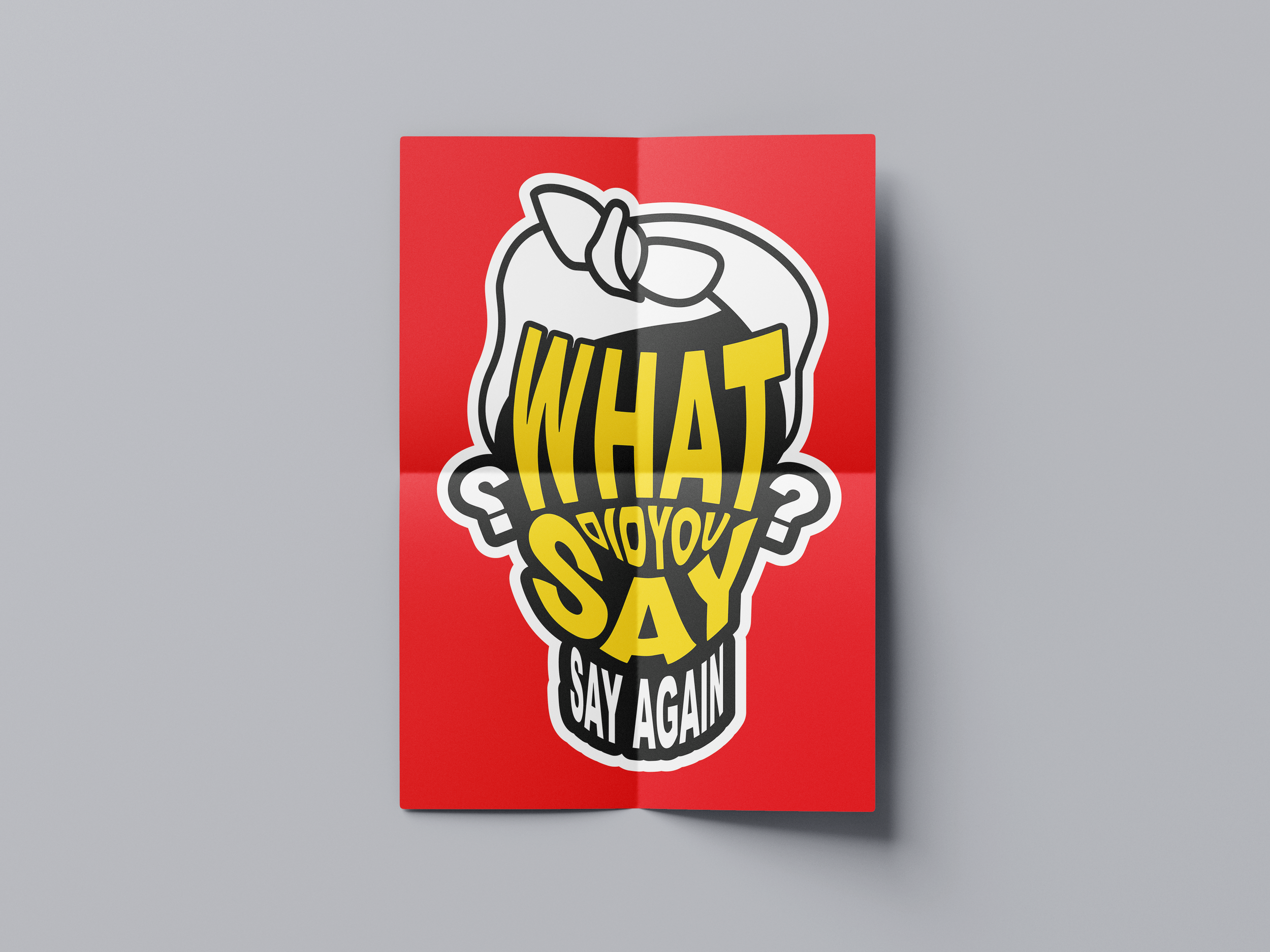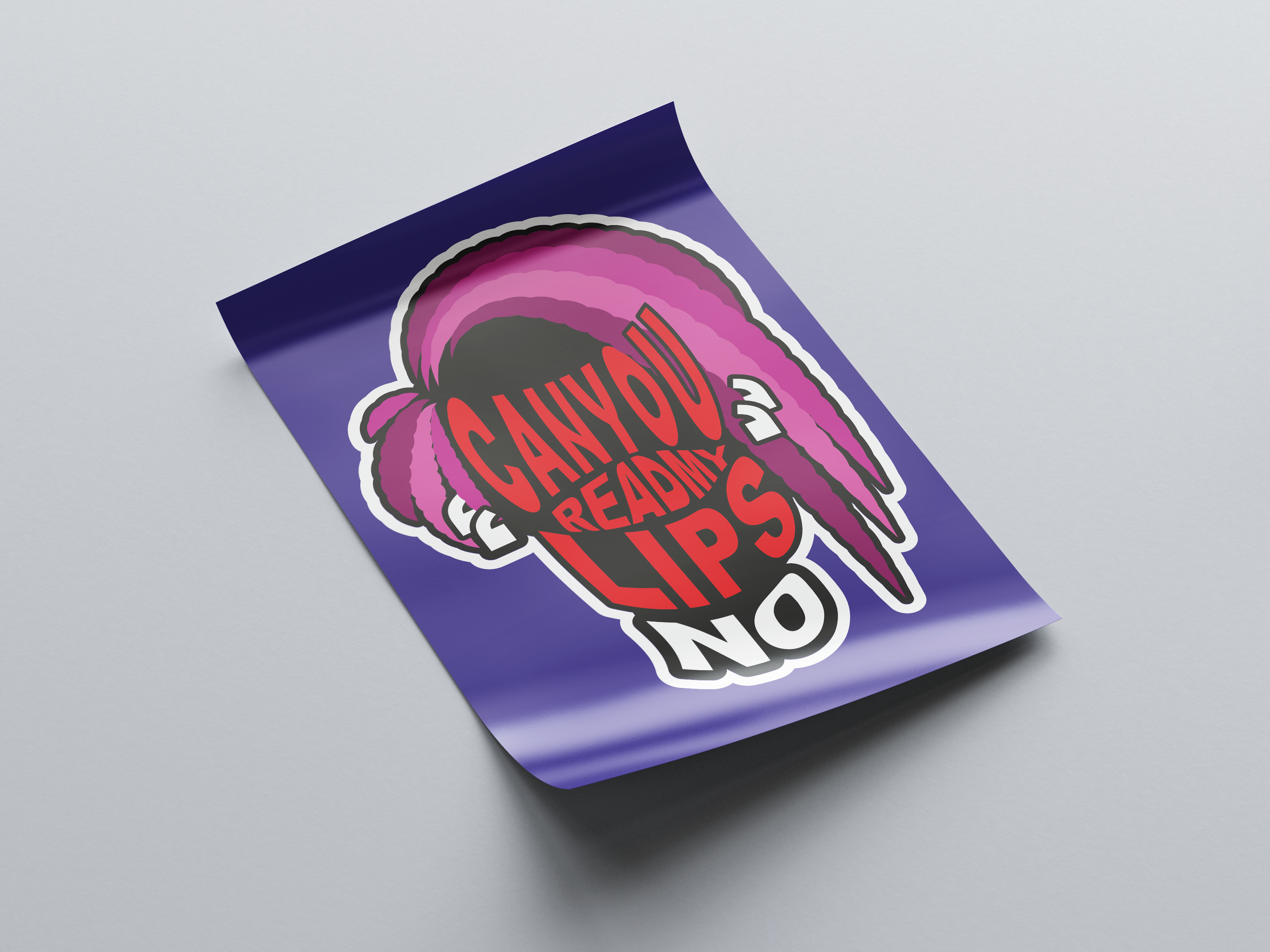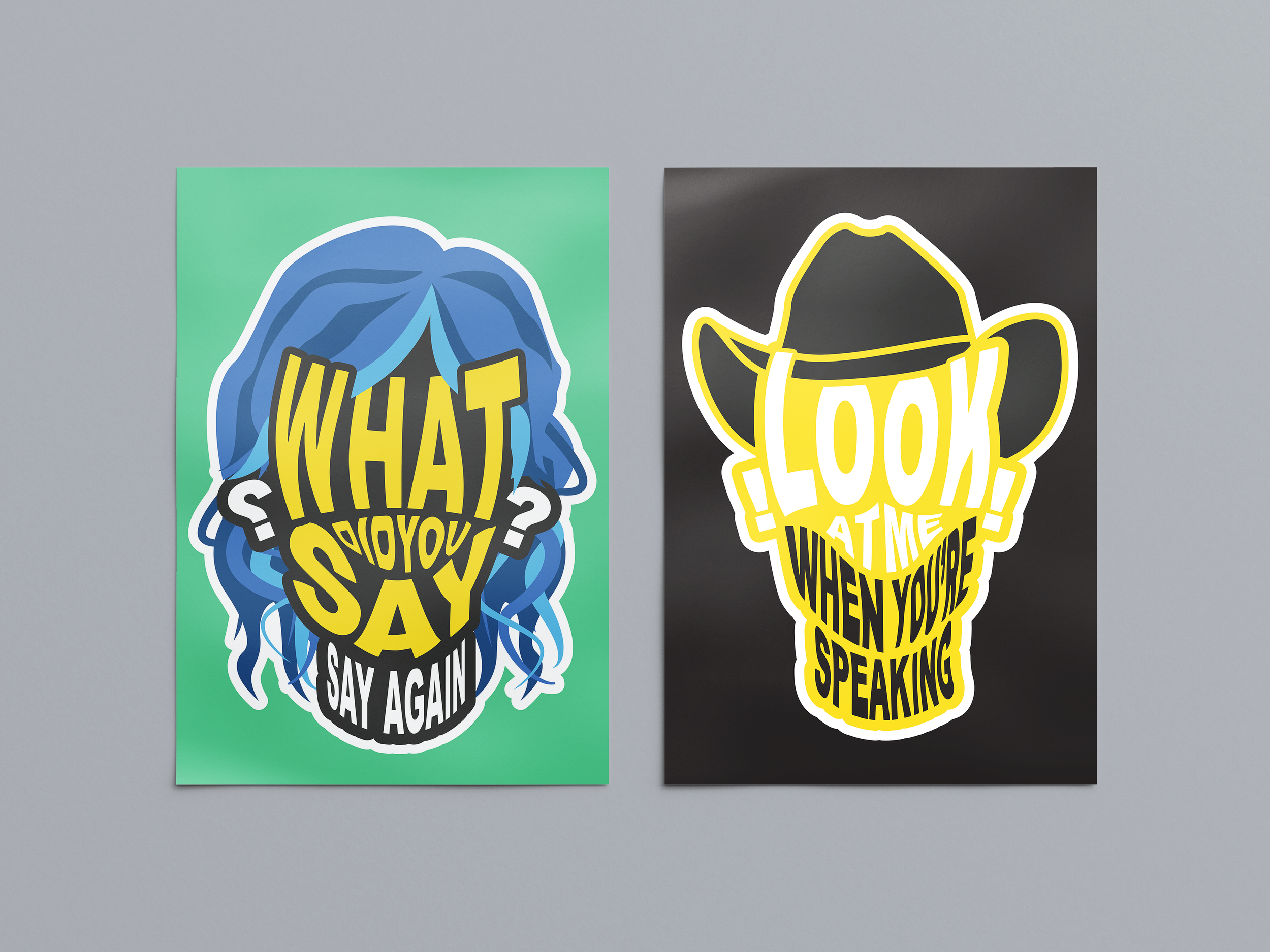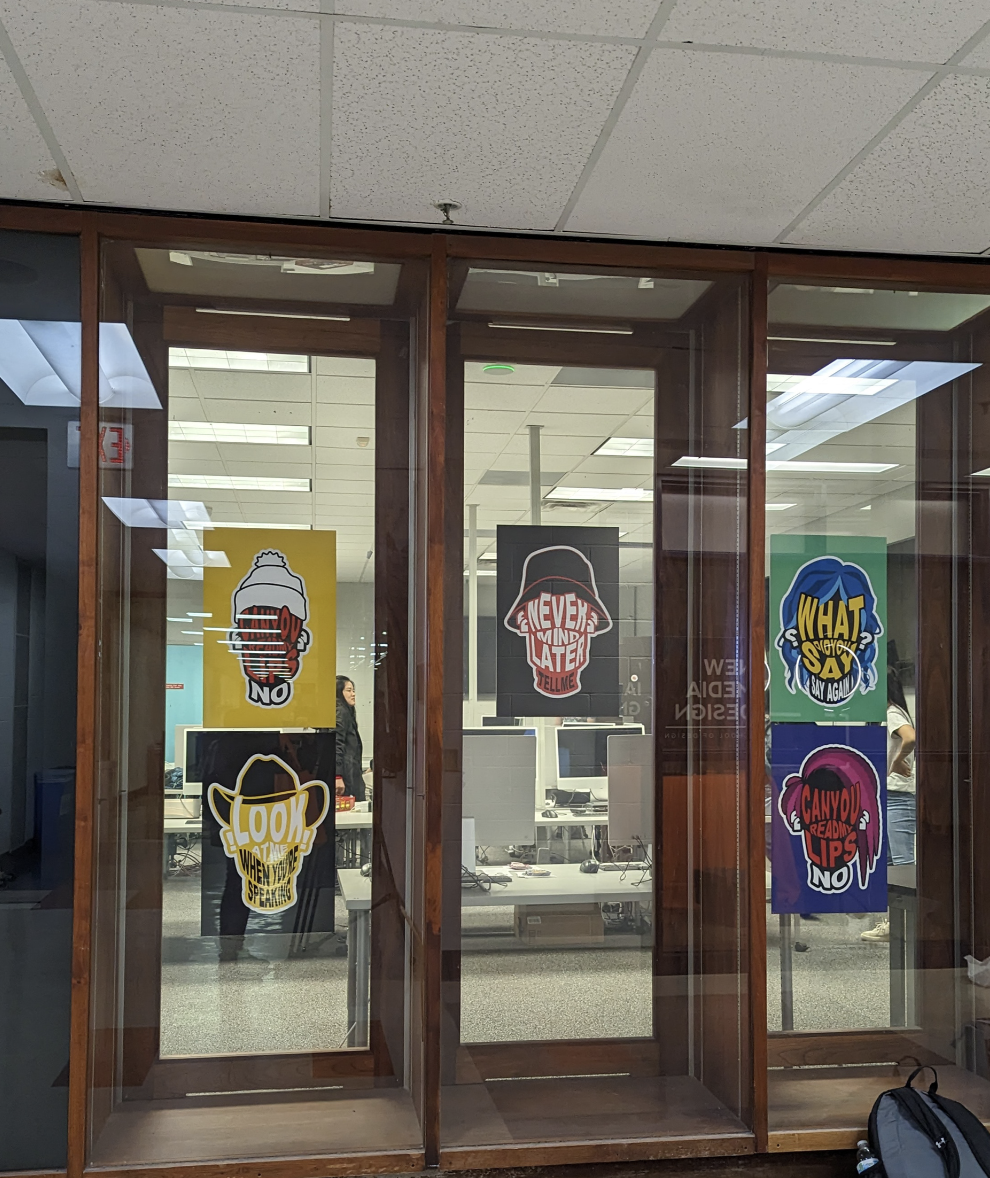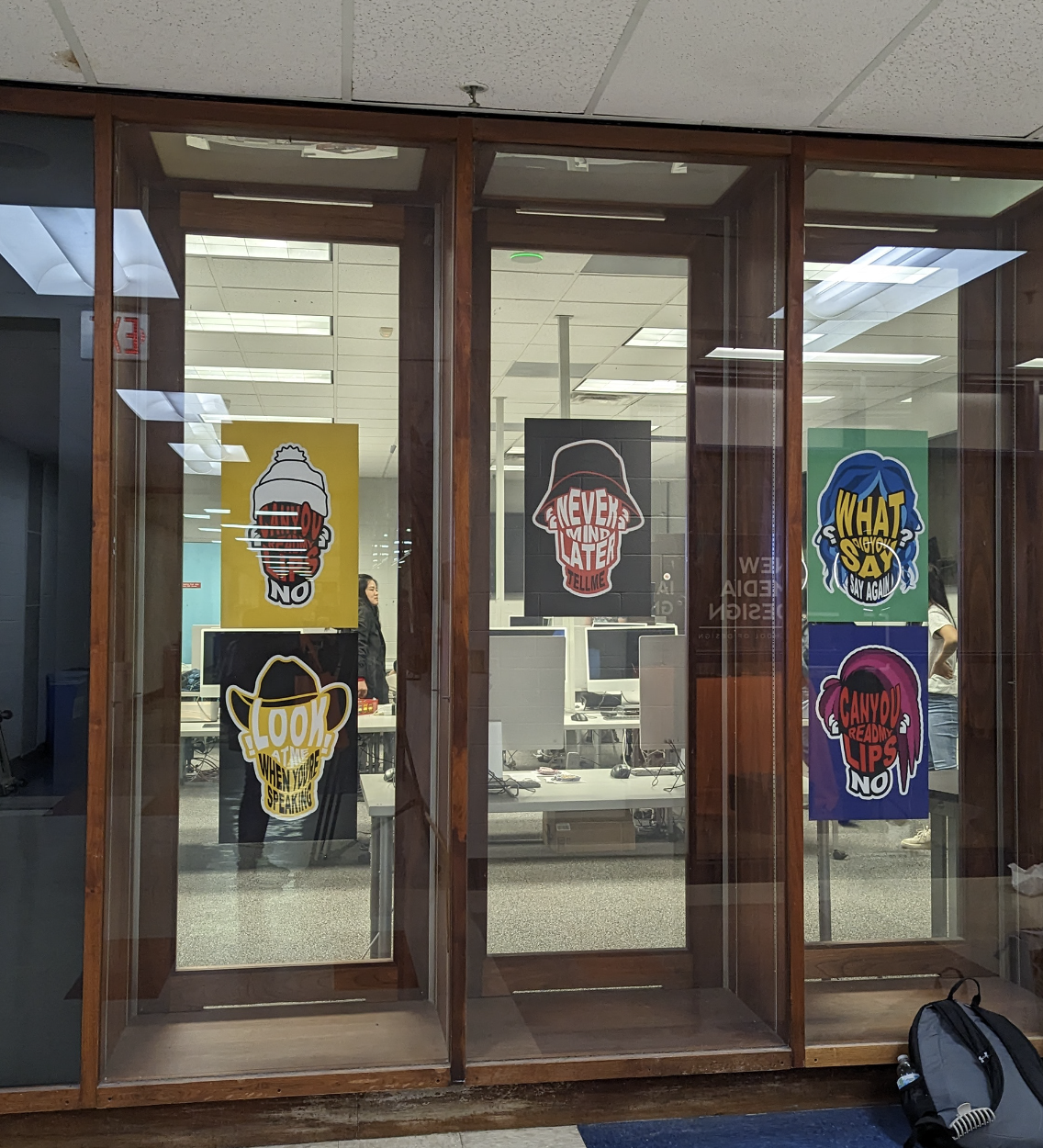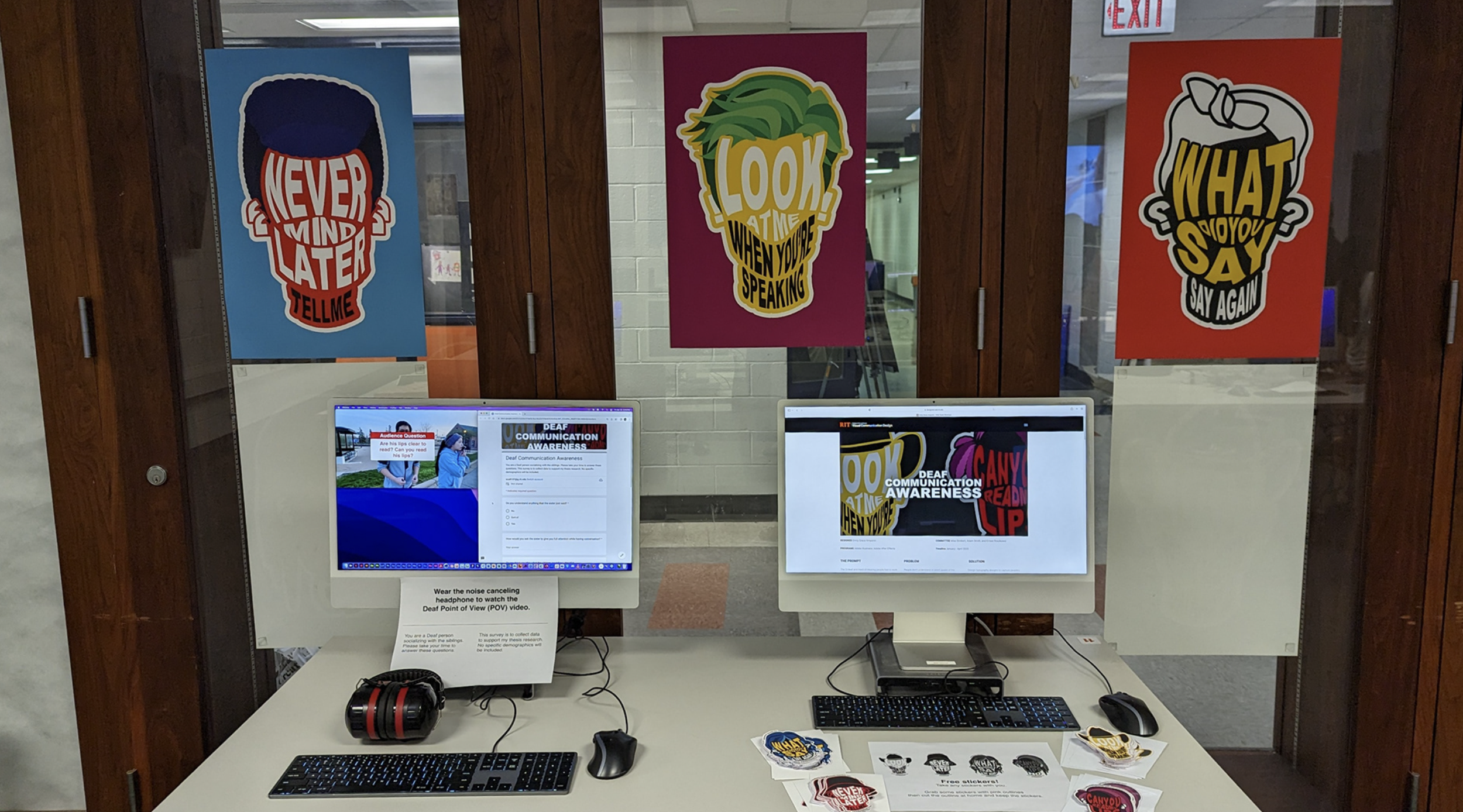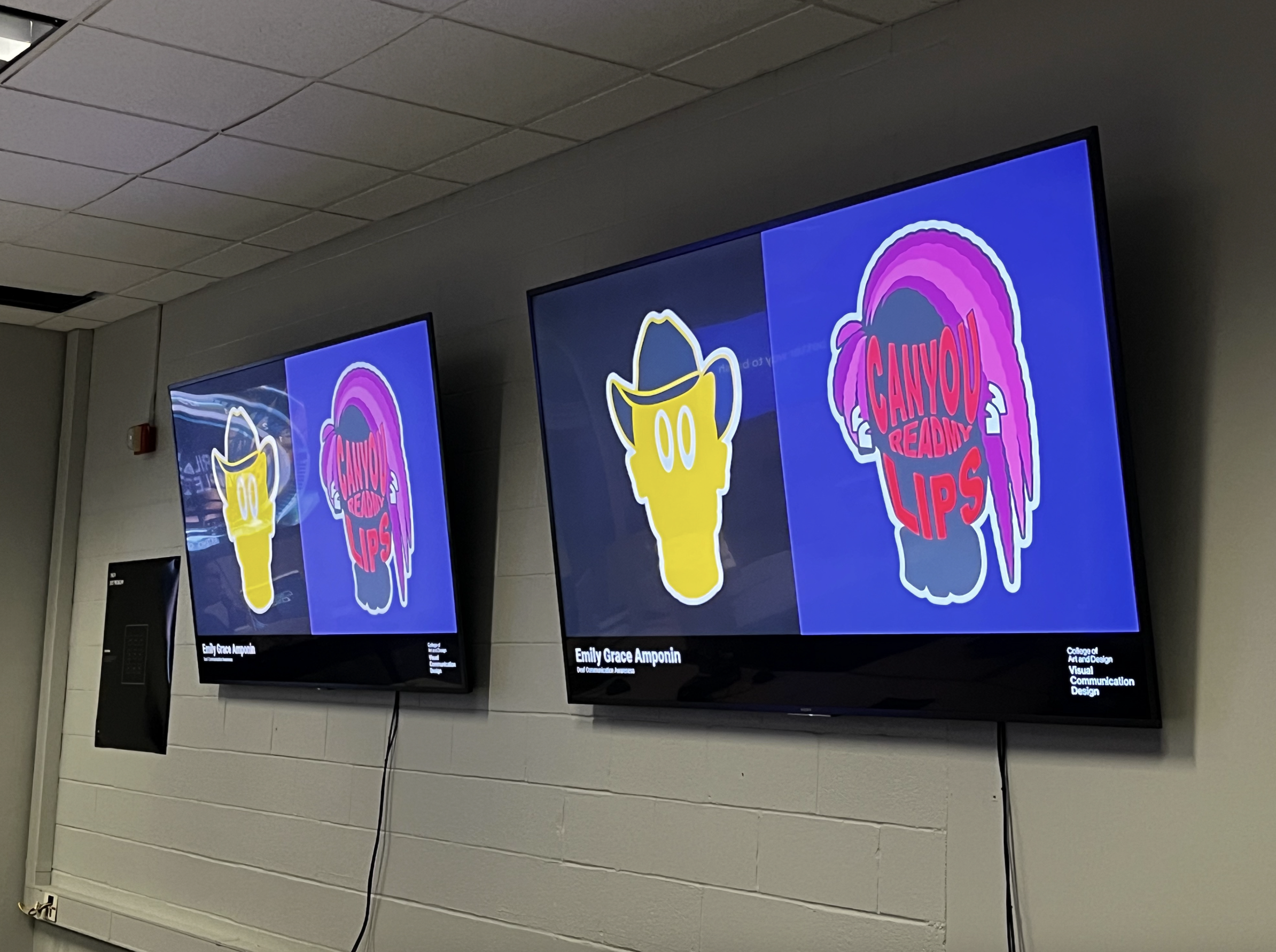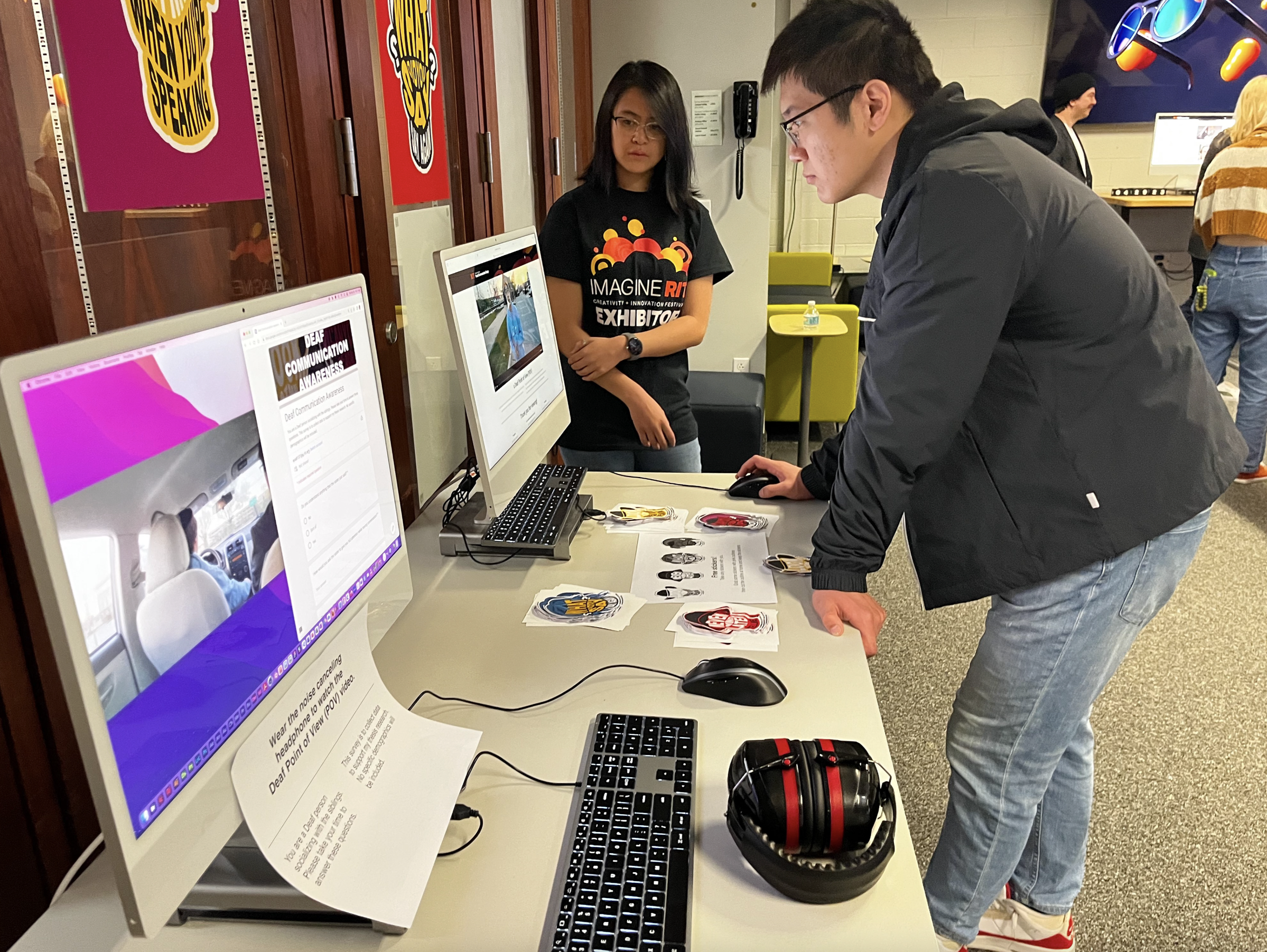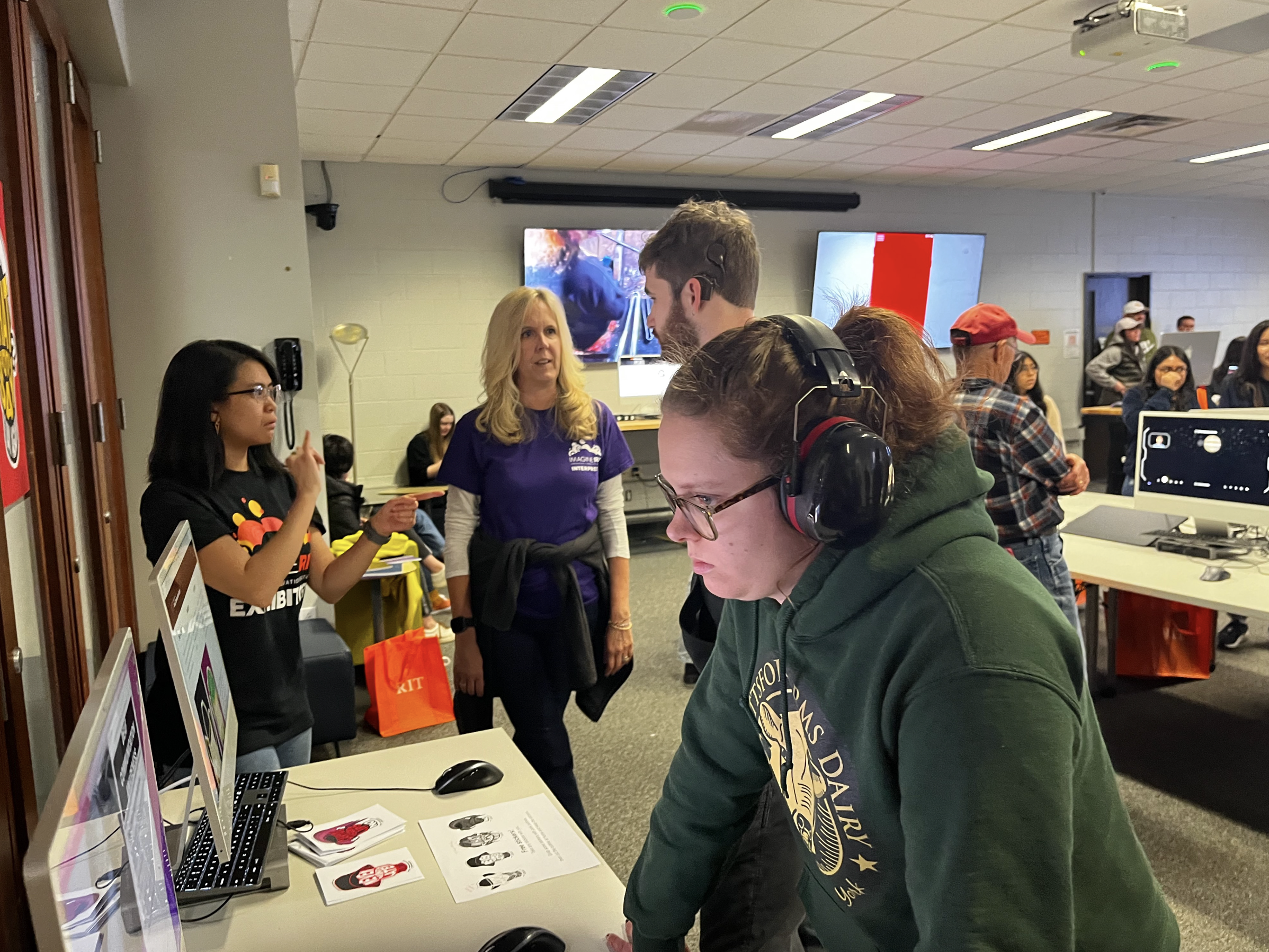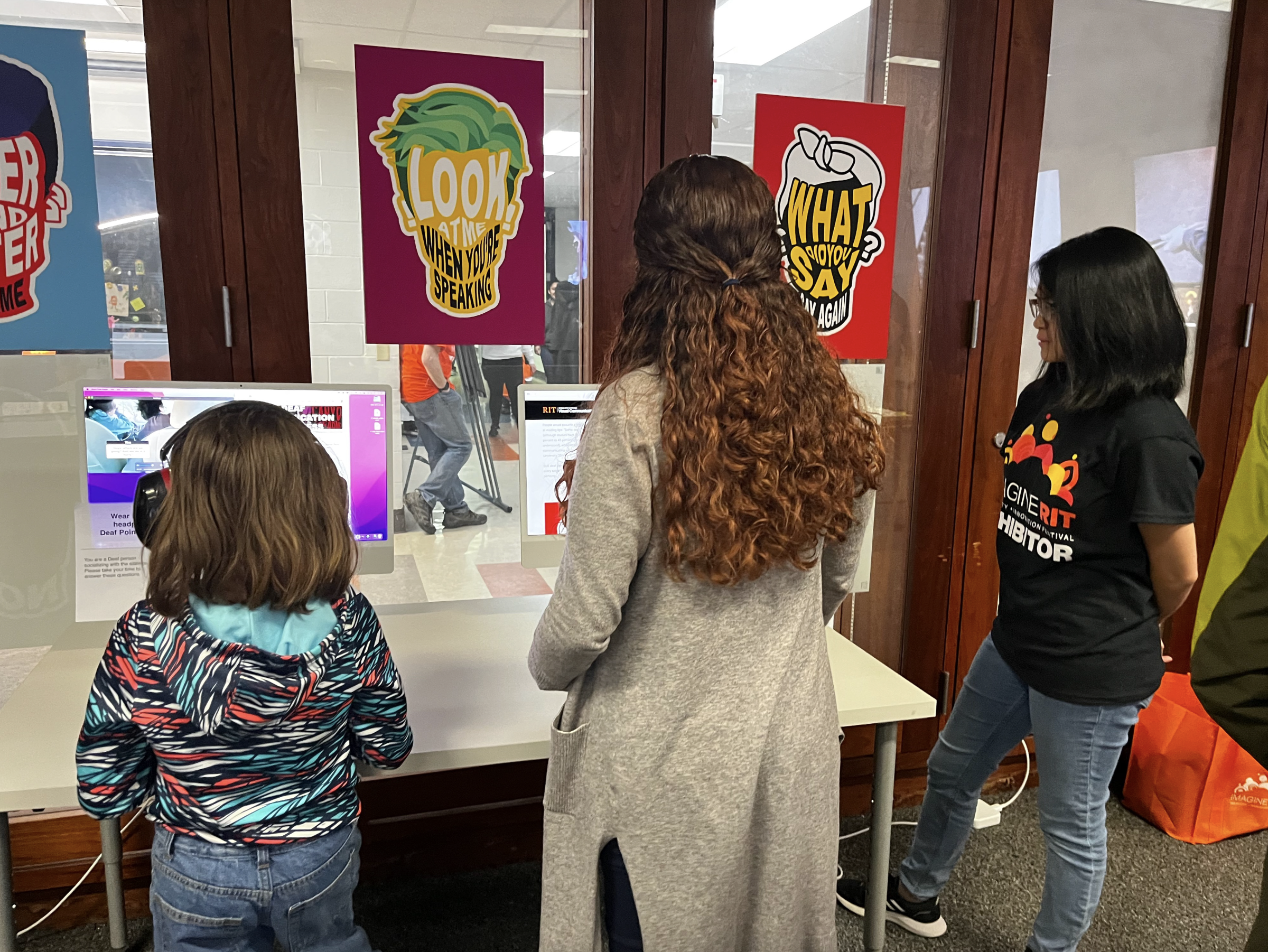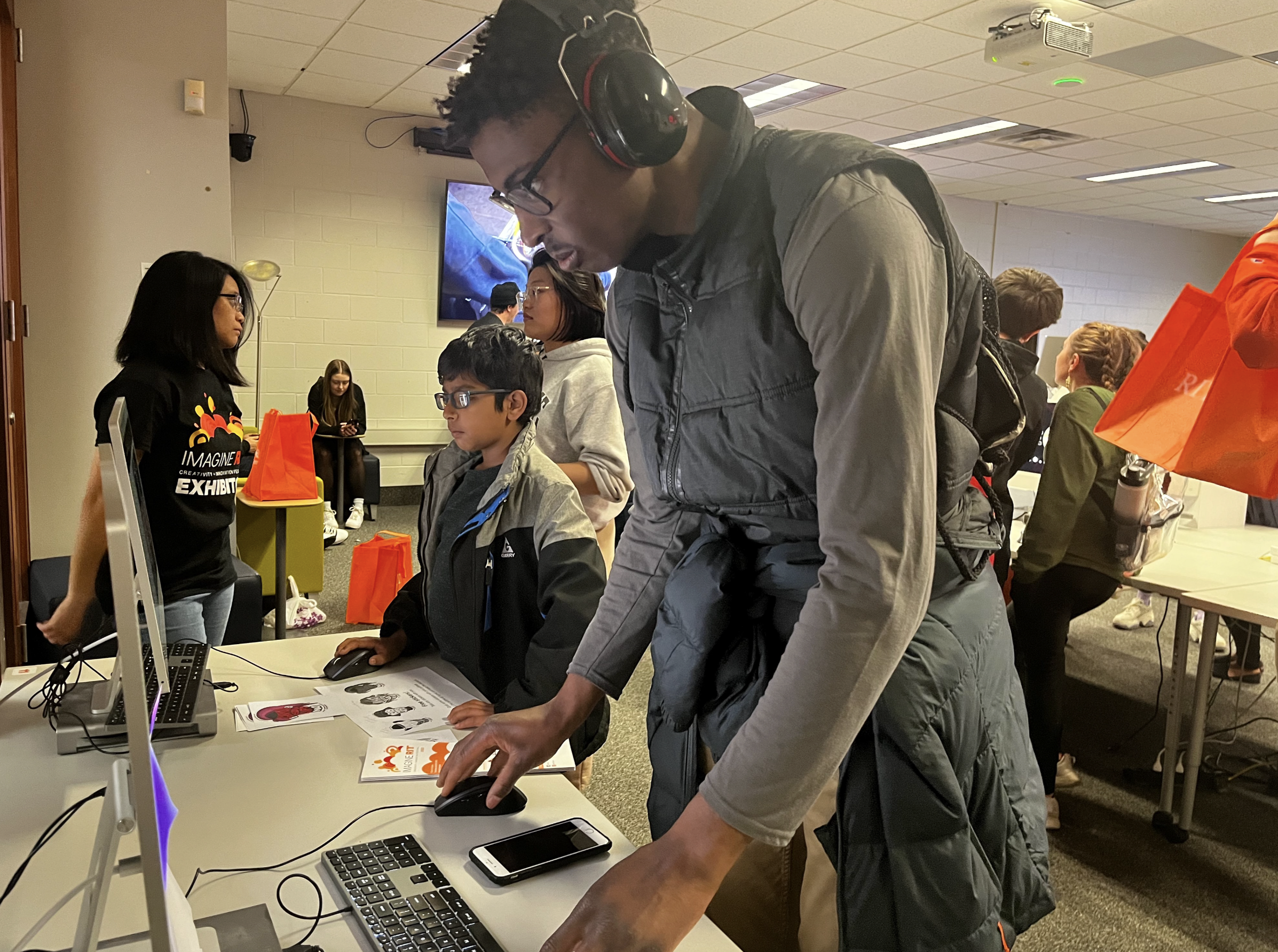Deaf Communication Awareness
DESIGNER Emily Grace Amponin
PROGRAMS Adobe Illustrator, Adobe After Effects
COMMITTEE Mike Strobert, Adam Smith, and Ernest Roszkowsi
TIMELINE January - April 2023
THE PROMPT: The D/deaf and hard-of-hearing people had to work harder, such as lip reading, asking to repeat, and assuming which words people were saying while conversing with others.
PROBLEM: People don’t understand or aren't aware of the experience and how difficult it is for D/deaf and Hard-of-Hearing people to deal with communication barriers.
SOLUTION: Design typography designs to capture people's attention. Use a point of view (POV) video to focus on communication from a deaf perspective. Encourage people to be in a deaf perspective and then try to understand the struggles while conversing.
TYPOGRAPHY PORTRAITS Typography is shaped as faces while showing dialogues from the perspective of D/deaf and Hard-of-Hearing people when conversing with people.
What did you say? Say again. When Deaf and Hard-of-Hearing people have a conversation with people, they ask this question, "What did you say?" - they need to catch which word the people say. They ask to repeat so they don't miss the information from a conversation or want to ensure they understand.
"Can you read my lips?" No. People would assume a deaf person is an expert at reading lips. “Some deaf people can read lips (although studies have found that only 30 percent to 45 percent of what is said is generally understood), while others benefit from communicating via pro-tactile ASL” [Boston University, 2018]. Still, deaf people struggle to communicate.
"Never mind. Later," Tell Me. They’re missing a lot, some, a few of the information from the conversation. Importantly, they must know and feel they were part of the conversation. Deaf and Hard-of-Hearing people get left out, hurt, or face barriers whenever people say: “Never mind, “ “We will tell you later,” and “It’s not important to know.”
Look at me when you're speaking! D/deaf and hard-of-hearing people often look at people's faces to read their expressions or lips while conversing. However, people do not look at D/deaf and Hard-of-Hearing people; they glance away and become distracted by their surroundings while conversing in a noisy or quiet ambiance.
TYPOGRAPHY PORTRAIT ANIMATION Typography portrait animations behave as facial actions: eyes blinking and looking around, then mouth moving as talking.
Color Negative Psychology
Deaf or Hard-of-hearing people experience conflicted or negative emotions such as frustration, aggression, loneliness, irritability, and resentment. Deaf or hard-of-hearing people get tired of facing these dialogues and being left out.
Yellow Aggression and Irritability
Red Aggression and Frustration
Black Depressing and Negativity
White Emptiness and Barriers
A Deaf Point-Of-View
A D/deaf or Hard-of-Hearing person interacts with siblings but struggles to converse with them and needs to understand the situation.
The grey boxes represent you from a deaf person's perspective while sharing thoughts or dialogues. The red boxes represent Audience Questions to ask the viewers to answer while watching the POV.
The Outcome and the Impact
Deaf Communication Awareness
The Outcome
Methodology Development: Determine the research methods to be used for the study. These may include qualitative approaches such as interviews or focus groups, quantitative methods like surveys, or a mixed-methods strategy.
Data Collection: Collect data according to the chosen methodology. This may involve scheduling interviews with Deaf individuals, conducting surveys, or participating in Deaf community events.
Revision and Feedback: Share drafts with advisors and peers for constructive feedback. Revise the document based on their suggestions to strengthen the overall argument and clarity.
Finalization: Prepare the final version of the thesis, ensuring that it meets all academic guidelines and formatting requirements.
This process highlights the essential steps taken in developing an understanding of Deaf Communication Awareness, emphasizing the importance of thorough research and community engagement throughout.
The Impact
At IMAGINE RIT on April 29, 2023, at Rochester Institute of Technology, this thesis project invited attendees to complete a survey while watching a Deaf point-of-view (POV) video without audio. Forty-one participants took part, and 95% reported being unable to understand a conversation between a brother and sister, expressing confusion, frustration, and feeling completely lost. In a scene discussing the brother’s overtime work, none of the participants understood what the siblings were talking about, when asked what they would do in this situation, most suggested using text messages, repeating the conversation, or speaking more slowly.
Additional scenes further highlighted communication barriers. Participants realized that lip-reading was ineffective, with 78% reporting that the conversation was unclear. In a fast-paced, emotionally intense scene of the siblings rushing to a car, 63% felt completely lost, while only 7% fully understood the exchange. Overall, the results revealed a lack of awareness about the importance of accessible communication for D/deaf and hard-of-hearing individuals. Experiencing the Deaf POV left participants feeling excluded and emotionally affected, leading to increased awareness and reflection after discussing the experience.
IMAGINE RIT
Saturday, April 29, 2023
Graduate Thesis Showcase, Booth 1305
Visual Communication Design
Photos credits: Melissa Van Hall and Beth Harris, ASL interpreters at RIT



